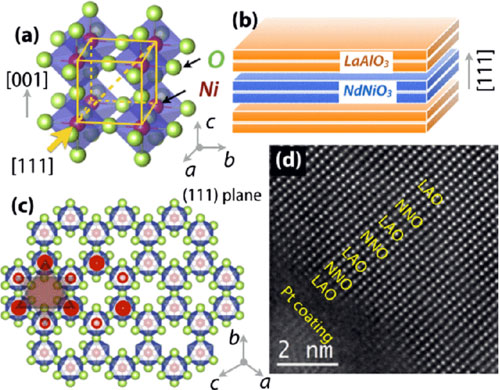| Posted: Feb 02, 2016 |
Physicists create artificial 'graphene'
(Nanowerk News) An international group of physicists led by the University of Arkansas has created an artificial material with a structure comparable to graphene.
|
|
“We’ve basically created the first artificial graphene-like structure with transition metal atoms in place of carbon atoms,” said Jak Chakhalian, professor of physics and director of the Artificial Quantum Materials Laboratory at the U of A.
|
|
In 2014, Chakhalian was selected as a quantum materials investigator for the Gordon and Betty Moore Foundation. His selection came with a $1.8 million grant, a portion of which funded the study,
|
|
Graphene, discovered in 2004, is a one-atom-thick sheet of graphite. Graphene transistors are predicted to be substantially faster and more heat tolerant than today’s silicon transistors and may result in more efficient computers and the next-generation of flexible electronics. Its discoverers were awarded the Nobel Prize in physics in 2010.
|
|
The U of A-led group published its findings this week in Physical Review Letters ("Mott Electrons in an Artificial Graphenelike Crystal of Rare-Earth Nickelate").
|
 |
| (© American Physical Society)
|
|
“This discovery gives us the ability to create graphene-like structures for many other elements,” said Srimanta Middey, a postdoctoral research associate at the U of A who led the study.
|
|
The research group also included U of A postdoctoral research associates Michael Kareev and Yanwei Cao, doctoral student Xiaoran Liu and recent doctoral graduate Derek Meyers, now at Brookhaven National Laboratory.
|
|
Additional members of the group were David Doennig of the University of Munich, Rossitza Pentcheva of the University of Duisburg-Essen in Germany, Zhenzhong Yang, Jinan Shi and Lin Gu of the Chinese Academy of Sciences; and John W. Freeland and Phillip Ryan of the Advanced Photon Source at Argonne National Laboratory near Chicago.
|

